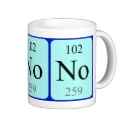|
|
Reference type: Book Chapter
Authors: Brazel CS
Publication date: 2002
Chapter title: Biomedical sensing.
Page numbers: 95-111.
DOI: 10.1002/0471216275.esm009
Alternative URL: http://media.wiley.com/product_data/excerpt/06/04711778/0471177806.pdf
Book title: Encyclopedia of Smart Materials
Editors: Schwartz M
Publisher: Wiley
Abstract: In recent years, biomedical diagnostics research has led to the development of simple, less invasive, and more accurate evaluative techniques. Much of this is due to biosensor technology, which has played an important role in material improvements used to sense, carry signals, and respond to signals. Biosensor devices can measure micromolar or even smaller quantities of biological substances, including chlorides, glucose, lactose, and urea. Medical applications abound, ranging from diagnostic tests for home testing to in vivo monitoring of vital conditions and using feedback to control drug delivery or send amplified signals of a change in patient health. Smart materials are frequently combined with biological components to create systems that respond to environmental conditions, such as temperature, pH, concentration of particular analytes, or even light. These smart materials are typically polymeric, and most have the common characteristic that changing environmental condition cause a thermodynamic change between hydrophilic and hydrophobic states, as detailed later. pH paper strips may be one of the simplest sensing devices; they relay a physiological condition through a colorimetric response, and because they are a form of dry chemistry, they simplify detection and diagnostics, which is especially important for home diagnostic kits.
This article presents the use of intelligent polymers in sensing systems, that range from traditional biosensors to advanced self-responsive systems. This review of biomedical diagnostics using smart polymers examines some of the medical applications for intelligent polymers used in electrode-based systems and in bioconjugate systems. Sensing devices are categorized by the mechanisms of signal detection and response, and examples of systems that monitor analytes, such as glucose, are addressed. Additional modes of response beyond the traditional electronic signal as well as synthesis techniques and examples of medical diagnostics using smart polymers, will be discussed.
|


 Element 13 card - Aluminium
Element 13 card - Aluminium














 Element 102 mug - Nobelium
Element 102 mug - Nobelium






